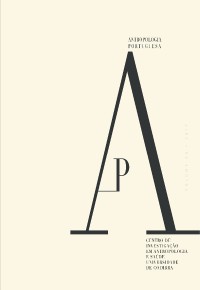Please use this identifier to cite or link to this item:
https://hdl.handle.net/10316.2/90692| DC Field | Value | Language |
|---|---|---|
| dc.contributor.author | Solano, Carla | - |
| dc.date.accessioned | 2017-12-29T16:53:47Z | |
| dc.date.accessioned | 2020-09-15T08:02:05Z | - |
| dc.date.available | 2017-12-29T16:53:47Z | |
| dc.date.available | 2020-09-15T08:02:05Z | - |
| dc.date.issued | 2017 | - |
| dc.identifier.issn | 0870-0990 | - |
| dc.identifier.issn | 2182-7982 (PDF) | - |
| dc.identifier.uri | https://hdl.handle.net/10316.2/43416 | - |
| dc.description.abstract | The theroretical focus is chronologically situated in the late 19th century – the discovery of the X-rays by Röentgen and the construction of knowledge, covering anatomy, images and the scientific breakthrough, which I call the “radiological body or Röentgen’s body” –, more specifically over the last 50 years of this discovery. The knowledge initially constructed in Europe, at the time influenced by the ideals of scientific rationality (eugenics) and discourses on the body made throughout the 20th century, legitimate what is normal and pathological in anatomy. This paper raises the following theoretical questions: having focused on the digital images of today, which result in a constructed and “rendered” body, can this body be interpreted as having an “eugenic” profile? Can it become a manipulable technological device? After looking at the historical framework of eugenics and its relevance today and questioning the concept of binary/digital body and of the “Visible Human Project”, and its construction, I cover the “rendering/reforming” process of the body of medicine up to the 21st century. I have also examined how digital medical images, which are associated with a certain “expertise”, rely on a set of classifications in the form of patterns of normality. | eng |
| dc.description.abstract | O objeto teórico parte de um acontecimento, cronologicamente situado no final do século XIX, a descoberta dos raios X, por Röentgen, e a construção de conhecimentos, entre a anatomia, as imagens e a descoberta científica, a que chamo “corpo radiológico ou corpo de Röentgen”. Coloca-se o enfoque nos últimos 50 anos desta descoberta. Os saberes inicialmente edificados numa Europa influída dos ideais da racionalidade científica (eugenia), e o discurso do corpo sobre eles construído ao longo do século XX, legitimam o normal e o patológico na anatomia. As questões teóricas que se colocam são: situado o enfoque nas atuais imagens digitais, das quais resulta um corpo construído e “renderizado”, pode este corpo ser lido como uma produção de contornos “eugenistas”? Pode tornar- -se um dispositivo tecnológico manipulável? Procede-se a um bosquejo histórico sobre eugenia e a sua atualidade, interpela-se o conceito de corpo binário/digital e do “Visible Human Project”, a sua construção, e aborda-se o processo de “renderização/reformatação” do corpo da medicina até ao século XXI. Pondera-se o modo como as imagens médicas digitais, às quais está associada uma determinada “expertise”, estão sustentadas em conjuntos de classificações sob a forma de padrões de normalidade. | por |
| dc.language.iso | por | - |
| dc.publisher | Imprensa da Universidade de Coimbra | - |
| dc.rights | open access | - |
| dc.subject | Science | eng |
| dc.subject | body | eng |
| dc.subject | medical imaging | eng |
| dc.subject | eugenics | eng |
| dc.subject | ciência | por |
| dc.subject | corpo | por |
| dc.subject | imagem médica | por |
| dc.subject | eugenia | por |
| dc.title | Do “corpo de Röentgen” ao “corpo Rendering”: considerações sobre eugenia e construções da imagem médica no séc. XXI | por |
| dc.title.alternative | From “Röentgen’s Body” to “Rendering Body”: considerations on eugenics and the construction of the medical image in the 21th century | eng |
| dc.type | article | - |
| uc.publication.collection | Antropologia Portuguesa vol. 34 | - |
| uc.publication.firstPage | 49 | - |
| uc.publication.lastPage | 65 | - |
| uc.publication.location | Coimbra | - |
| uc.publication.journalTitle | Antropologia Portuguesa | - |
| uc.publication.volume | 34 | por |
| dc.identifier.doi | 10.14195/2182-7982_34_3 | - |
| uc.publication.digCollection | IP | - |
| uc.publication.digCollection | B1 | - |
| uc.publication.orderno | 3 | - |
| uc.publication.area | Ciências Sociais | - |
| uc.publication.manifest | https://dl.uc.pt/json/iiif/10316.2/90692/215326/manifest?manifest=/json/iiif/10316.2/90692/215326/manifest | - |
| uc.publication.thumbnail | https://dl.uc.pt/retrieve/11229707 | - |
| uc.publication.parentItemId | 71168 | - |
| uc.itemId | 71170 | - |
| uc.thumbnail.uri | https://dl.uc.pt/iiif-imgsrv/11229670/dl!3!22!82!77!22827785593134119892096823723164592622 | - |
| item.fulltext | With Fulltext | - |
| item.grantfulltext | open | - |
| Appears in Collections: | Antropologia Portuguesa | |
Files in This Item:
| File | Description | Size | Format | |
|---|---|---|---|---|
| do_corpo_de_roentgen_ao_corpo_rendering.pdf | 302.26 kB | Adobe PDF |  |
Items in DSpace are protected by copyright, with all rights reserved, unless otherwise indicated.
